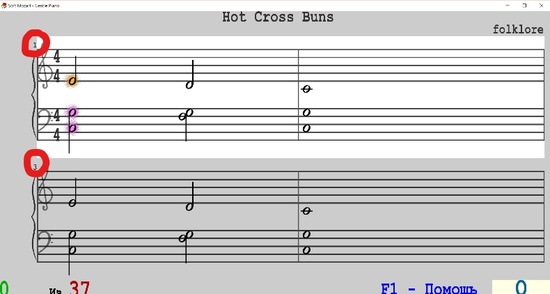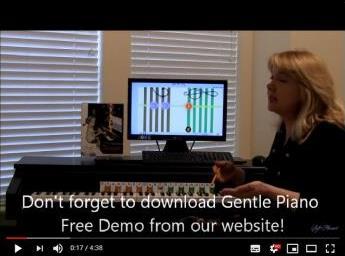|
Month #1 Week 4 How are you? Do you see now that to teach your child music and piano is a lot of fun? Piano lessons are incredible for building your child's attention span. Pedagogy: I have so much important information for you! I worked with my musical / piano method for decades and noticed the success of my students in various fields of study, not just music. Piano keys are the best tool for brain training, if you know how to use them properly. It does not matter whether you are a musician or not. My system will help you learn not only music, but your child's unique features of the mind. So, today I will tell you about the basic characteristics of attention.
Using the Hiner method, you can measure your child’s focus level using exact numbers as well as develop his or her attention span from scratch, even if the child is just 2 years old. With the Soft Mozart software, you can get a better picture of how each stage of attention span development works for a beginning student. Professional teachers will also be able to more accurately assess the degree of readiness of student attention span to solve major problems in music learning. Read more about our findings below and draw your own observations with the help of our materials and tools. Recording and analyzing the results will give you a better understanding of this article as well as will help you track your student’s work progress through exact numbers. What is Attention? Attention is energy directed towards solving a specific problem. What are the kinds of problems faced by attention? Problems are divided into physical and superstructural.
- ability to hear a certain number of sound wave oscillations; - ability to see with a certain amount of light; - ability to control one’s muscles in a particular way, etc.
- particular functions of human nervous system; - psychology of perception; - developmental hierarchy of neural connections in human brain. A lack of understanding of the essence of physical characteristics of the student's attention can lead to unrealistic requirements, which, in turn, can affect his confidence, self-esteem, and result in frustration and loss of motivation to learn. Thus, if the student's attention is fully engaged in finger coordination development, by demanding to pay attention to rhythm as well as to nuances, we purposelessly overload his brain. Naturally, a baby’s strongest fingers are his index (pointing to others) finger and his thumb (pointing to oneself). With the help of 3D equipment, by observing a baby’s development in a mother’s womb, we can see how he prepares himself to suck mother's milk with the help of the thumb and the index finger. After birth, he makes extensive use of the index finger during the pre-speech period to show what he wants.
That is exactly why the Gentle Piano Module emphasizes playing with the index finger at initial stages of learning. Even professional pianists face physical problems. Thus, attention of a concert pianist is first concentrated on the degree of impact force depending on how "tight " or "light" the piano keys are, the specific nuances of using a pedal, the acoustics of a concert hall, and so on. Just like a driver must first adapt to a new car, a pianist must get used to a new instrument. Super-structural problems are mostly associated with our abstract thinking: the ability to analyze, evaluate, make decisions, impact action, and create. Example: once an artists overcomes physical problems and adapts to his instrument, he can pay closer attention to solving superstructural (creative) problems. He can concentrate on artistic interpretation, image, and character of a music piece. By the same token, the driver who got used to his new car, can pay closer attention to directions, conversations with passengers or listening to music. The energy of attention can be compared to that of money. This analogy makes it easier to understand how it is distributed and how it works.  GENTLE PIANO GENTLE PIANOPress S to listen to the piece Now let's learn how to cut shorter segments of the piece. We have to cut first 4 bars. Press 6 and see the bars numbers on the left:  Using the down arrows go to the bar 5 and press CTRL+Backspace to cut 4 bars. Here is a short video about how to cut smaller segments in your piano piece:  Ask your child to play 4 bars of the piece with the Right Hand. Let us know, how it went! Start a notebook and take notes! No 'saving scores' on computer, no printing them out!Take your eyes off screen and write down your scores. If you want to keep the scores on line, type them in your Diary of our forum. Best Practice of keeping scores: Gentle Piano: Date, Name of the Piece, Album *optional* Score first time amount of correct notes / time delay 1. ____/____ 2_____/______ Experience our Theory Theater. This story will help to teach your child to value music sounds and disrespect noise. The best friend of noise is headache. This what we want your child to learn! There are many other concepts in the story. Watch it and hear the music! By the way, you will hear the same Hayden 'Surprise Symphony' in the story. Enjoy!  Sincerely yours, Hellene Hiner PS Always check, if there any recital in the progress! You and your child will benefit a lot from the participation. Your place to start your Diary is here |


